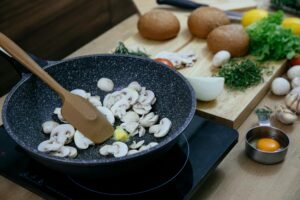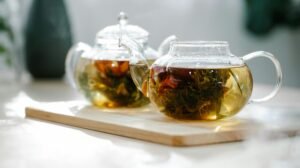How to Choose the Best Daiginjo Sake
Daiginjo sake, often hailed as the pinnacle of sake brewing, is a luxurious and refined drink cherished by connoisseurs worldwide. To fully appreciate and select the best Daiginjo sake, one must delve into its intricate qualities, production methods, and distinguishing characteristics. In this comprehensive guide, we will walk you through everything you need to know to choose the best Daiginjo sake for any occasion.
Understanding Daiginjo Sake
What is Daiginjo Sake?
Daiginjo sake is a high-grade sake known for its superior quality and delicate flavors. The term “Daiginjo” means “great ginjo,” which refers to the labor-intensive brewing process that involves polishing the rice to at least 50% of its original size. This meticulous polishing removes impurities and results in a sake that is fragrant, smooth, and complex.
The Rice Polishing Ratio
The rice polishing ratio is a crucial factor in determining the quality of Daiginjo sake. The lower the polishing ratio, the higher the quality of the sake. For instance, a sake with a 40% polishing ratio means that 60% of the outer layer of each rice grain has been polished away. This results in a purer starch core, which leads to a more refined and elegant flavor profile.
Yeast and Fermentation Process
The yeast used in the fermentation process greatly influences the aroma and flavor of Daiginjo sake. Brewers often use specially cultivated yeast strains that enhance the fruity and floral notes characteristic of this type of sake. The fermentation process is carefully controlled to ensure the delicate balance of flavors and aromas.
Key Characteristics of Daiginjo Sake
Aroma and Flavor Profile
Daiginjo sake is celebrated for its aromatic complexity and nuanced flavors. Common aroma notes include melon, pear, apple, and banana, while the flavor profile often features a harmonious blend of sweetness, acidity, and umami. The finish is typically clean and crisp, leaving a lingering impression on the palate.
Mouthfeel and Texture
The mouthfeel of Daiginjo sake is smooth and silky, often described as velvety. This texture, combined with the sake’s light body, makes it exceptionally easy to drink and enjoy. The refinement in texture is a direct result of the extensive polishing and meticulous brewing process.
How to Select the Best Daiginjo Sake
Assessing the Brewer’s Reputation
The reputation of the brewery plays a significant role in the quality of Daiginjo sake. Established breweries with a long history of producing high-quality sake are often a reliable choice. Research the brewery’s background, awards, and reviews to ensure you are selecting a sake from a reputable producer.
Examining the Bottle Label
The bottle label provides essential information about the Daiginjo sake. Look for details such as the rice polishing ratio, the type of rice used, the yeast strain, and the brewery’s name. Additionally, some labels may include tasting notes or food pairing suggestions, which can help guide your selection.
Considering the Price Point
While price is not always an indicator of quality, it can be a useful guideline. Daiginjo sake tends to be more expensive due to the labor-intensive production process and the high quality of ingredients used. Set a budget and look for sake within that range, keeping in mind that higher-priced options often offer a more refined experience.
Tasting Before Buying
Whenever possible, taste Daiginjo sake before making a purchase. Many specialty sake shops and festivals offer tasting events where you can sample different sakes. This firsthand experience allows you to identify your personal preferences in terms of aroma, flavor, and texture.
Pairing Daiginjo Sake with Food
Ideal Food Pairings
Daiginjo sake’s delicate and complex flavors make it an excellent companion for a variety of dishes. Ideal pairings include:
- Sashimi and Sushi: The clean and crisp finish of Daiginjo sake complements the freshness of raw fish.
- Lightly Grilled Fish: The subtle flavors of the sake enhance the natural taste of grilled fish without overpowering it.
- Salads with Light Dressings: The fruity and floral notes of Daiginjo sake pair well with fresh salads and light vinaigrettes.
- Delicate Cheeses: Soft and mild cheeses, such as goat cheese or Brie, complement the sake’s smooth texture and nuanced flavors.
Serving Temperature
Daiginjo sake is best enjoyed chilled, typically between 10-15°C (50-59°F). Chilling enhances the sake’s fruity and floral aromas while maintaining its crisp and clean finish. Avoid serving Daiginjo sake at room temperature or warmed, as this can dull its delicate characteristics.
Storing Daiginjo Sake
Proper Storage Conditions
To preserve the quality of Daiginjo sake, it is essential to store it under the right conditions. Keep the sake in a cool, dark place away from direct sunlight and temperature fluctuations. Ideally, store the bottle in a refrigerator set between 5-10°C (41-50°F).
Shelf Life and Consumption
Daiginjo sake is best consumed within a year of purchase to enjoy its peak flavors and aromas. Once opened, it should be consumed within a few days to maintain its quality. Always seal the bottle tightly and store it in the refrigerator after opening.
Top Daiginjo Sake Brands to Consider
Dassai 23
Dassai 23 is one of the most renowned Daiginjo sakes, known for its exceptional quality and intricate flavor profile. With a polishing ratio of 23%, it offers an exquisite balance of fruity and floral notes with a silky-smooth finish.
Kubota Manju
Kubota Manju is another top-tier Daiginjo sake, celebrated for its elegance and refined taste. It features a delicate aroma of melon and pear, complemented by a rich, umami-laden flavor and a clean, crisp finish.
Hakkaisan Daiginjo
Hakkaisan Daiginjo is a favorite among sake enthusiasts for its subtle complexity and smooth texture. The sake’s well-balanced flavor profile includes hints of apple and white peach, making it a versatile choice for various food pairings.

Exploring the Regions Producing Daiginjo Sake
Niigata
Niigata is often referred to as the “Kingdom of Sake” due to its ideal climatic conditions and pure water sources, which contribute to the production of high-quality sake. The region is known for producing light and clean Daiginjo sakes with a crisp finish, making it a popular choice for those who appreciate a more refined and subtle flavor profile.
Hyogo
Hyogo is home to the famous Nada district, one of the most renowned sake-producing areas in Japan. The mineral-rich “Miyamizu” water from this region is highly prized for sake brewing. Hyogo’s Daiginjo sakes are often characterized by their rich umami flavors and well-balanced profiles, making them versatile for various food pairings.
Yamagata
Yamagata is gaining recognition for its innovative sake brewers and high-quality rice varieties. The region’s cool climate and clean water sources result in Daiginjo sakes with fruity and floral notes, offering a delightful aroma and a smooth, elegant taste.
Fukushima
Fukushima is known for its pristine natural environment and high-quality rice, which contribute to the production of exceptional Daiginjo sakes. The sakes from this region are often praised for their balanced flavors, pleasant aromas, and smooth textures, making them a favorite among sake enthusiasts.
Notable Sake Competitions and Awards
The International Wine Challenge (IWC)
The International Wine Challenge is one of the most prestigious sake competitions globally, where expert judges evaluate sakes based on their aroma, flavor, and overall quality. Winning a gold medal or trophy at the IWC is a mark of excellence and can be a reliable indicator of a top-tier Daiginjo sake.
Japan Sake Awards
The Japan Sake Awards is the oldest and most esteemed sake competition in Japan. It focuses exclusively on sake and recognizes the best brews across various categories, including Daiginjo. Sakes that receive high accolades at this competition are often considered some of the finest in the world.
Kura Master
Kura Master is a French competition dedicated to Japanese sake, judged by sommeliers and other wine professionals. This competition aims to introduce high-quality sake to the European market. Daiginjo sakes that perform well here are usually appreciated for their compatibility with diverse cuisines and refined palates.
The Cultural Significance of Daiginjo Sake
Traditional Celebrations
Daiginjo sake holds a special place in traditional Japanese celebrations and ceremonies. It is often served during significant events such as weddings, New Year celebrations, and other festive occasions, symbolizing good fortune and prosperity.
Modern Appreciation
In contemporary settings, Daiginjo sake is enjoyed by sake enthusiasts worldwide who appreciate its intricate flavors and craftsmanship. It is commonly found in upscale restaurants, sake bars, and gourmet food festivals, where it is paired with fine cuisine and enjoyed as a luxury beverage.
Gift-Giving
Daiginjo sake is also a popular choice for gifting, especially during holidays or as a gesture of appreciation. Its elegant packaging and esteemed reputation make it an impressive and thoughtful gift for friends, family, or business associates.
Sustainability and Innovation in Daiginjo Sake Brewing
Sustainable Rice Farming
Many sake breweries are now focusing on sustainable rice farming practices to ensure the long-term availability of high-quality sake rice. This includes reducing the use of pesticides, employing organic farming techniques, and supporting local rice farmers.
Eco-Friendly Brewing Practices
In addition to sustainable farming, breweries are adopting eco-friendly brewing practices. This includes energy-efficient brewing equipment, water conservation measures, and reducing waste. Some breweries are even using renewable energy sources to power their facilities, further minimizing their environmental impact.

Innovative Brewing Techniques
Modern sake brewers are constantly experimenting with new brewing techniques to enhance the flavor and quality of Daiginjo sake. This includes the use of advanced fermentation technologies, the introduction of unique yeast strains, and the exploration of alternative rice varieties. These innovations are helping to push the boundaries of traditional sake brewing and create exciting new expressions of Daiginjo sake.
Conclusion
Choosing the best Daiginjo sake requires a deep understanding of its intricate production methods, distinctive characteristics, and the regions that produce it. By considering factors such as the rice polishing ratio, the reputation of the brewery, and the sake’s flavor profile, you can make an informed decision and select a sake that offers a truly refined and enjoyable experience.
Whether you are savoring it at a special celebration, pairing it with exquisite cuisine, or exploring the diverse offerings from different regions, Daiginjo sake promises a journey of discovery and delight. Embrace the rich cultural heritage and modern innovations of Daiginjo sake, and elevate your appreciation for this extraordinary beverage.















